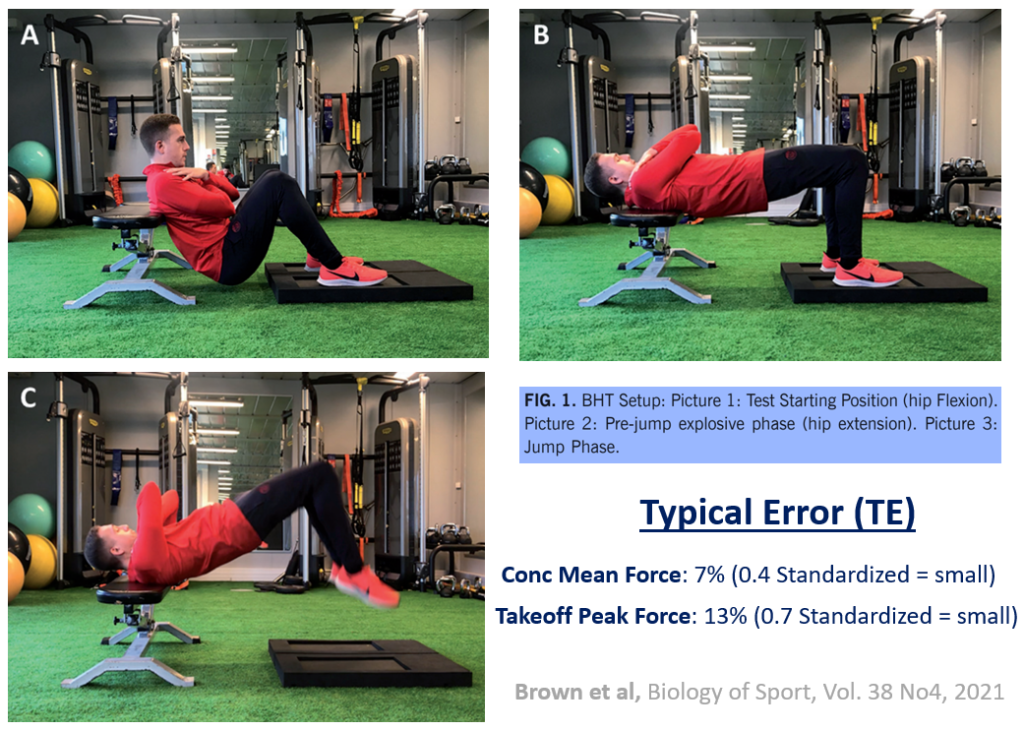The ballistic hip thrust test: a potential tool to monitor neuromuscular performance
Brown M, Hader K, Guilhem G, Simpson BM, Buchheit M and Lacome M. The ballistic hip thrust test: a potential tool to monitor neuromuscular performance. Biology of Sport, Vol. 38 No4, 2021
Full text here
ABSTRACT: To investigate the reliability of the ballistic hip thrust (BHT) test performed on force plates as a diagnostic tool to monitor posterior chain neuromuscular status and compare its usefulness with the countermovement jump (CMJ). Twenty-two male football players from an elite Under-19 French Ligue 1 football club (16.4 ± 0.6 years) performed two assessments; Assessment 1: Two testing sessions separated by one week
were performed to assess the reliability of the test. Participants performed a 3-set workout of 4 repetitions of the BHTs each session. Intra-day (between set) and inter-day (between testing day) reliability of concentric mean force, takeoff peak force, and peak power were assessed. Assessment 2: Participants performed a 1-set workout of 3 repetitions of the CMJ and 4 repetitions of the BHT tests pre- and post-training to compare the usefulness of both tests. Concentric mean force and takeoff peak force showed small-to-moderate standardised typical errors (TE: 0.2–0.7) for inter- and intra-day reliability. Inter-day concentric mean force showed a coefficient of variation (CV) of 7.2%. Intra-day concentric mean force and take-off peak force showed a CV of 4.2% and 5.5%.
BHT and CMJ showed similar moderate levels of usefulness. The BHT test showed moderate levels of reliability and usefulness. This test could be a useful addition to a testing battery to monitor posterior chain neuromuscular status.




